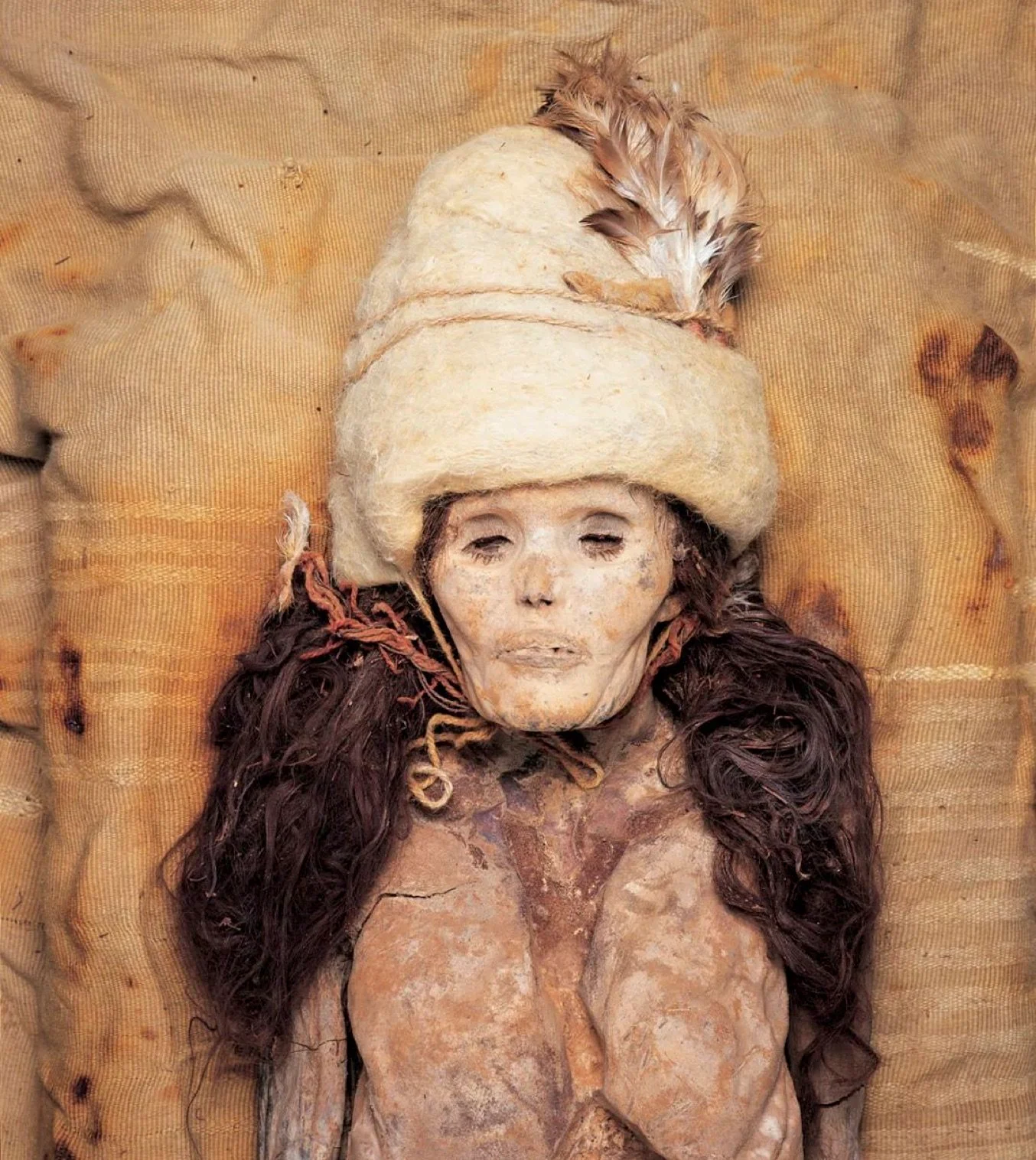Copyright scmp

The witch hat can be seen everywhere, from Halloween costumes to Hollywood films. But what many may not know is that a particular group of “witches” in northwestern China have, for decades, haunted historians and anthropologists with questions relating to the origins of the headgear and early human migration. The discovery of well-preserved mummies in the Tarim Basin in Xinjiang shook the archaeological world in the early 20th century, and significant investigations since the 1990s have continued to baffle scholars. At the eastern edge of the basin is an area that is the cradle of Subeshi culture, an Iron Age civilisation influenced by cultures from western and central Asia. Archaeologists were particularly perplexed by a Subeshi cemetery, in which three mummified female bodies were found that dated back to between the fourth and second centuries BC. Although thousands of years old, the bodies were remarkably well preserved, with their unique clothing carrying stories of the past. They wore sheepskin coats that reached their calves and a cloak that was placed over their shoulders in the same tradition of various ancient nomadic tribes. Their feet were clad in leather slippers with brown felt stockings. They also wore a leather glove on one hand, suggesting they were falconers. But what attracted historians and excavators most was their enormous funnel-shaped headgear. Made out of black felt, the hats were 60cm (24 inches) tall with wide brims. While there is no evidence to suggest the women engaged in witchcraft, their distinctive hats earned them the title “the witches of Subeshi”. The hats worn by the Tarim mummies were common among both men and women in certain Central Asian tribes. For example, Darius the Great (c. 550BC-486BC) of the Achaemenid Empire documented a victory over the “Sakas of the pointed hats” – referring to an ancient eastern Iranian nomadic tribe. The mummies discovered in the Tarim Basin caused a stir in the fields of archaeology and history. In their book The Tarim Mummies: Ancient China and the Mystery of the Earliest Peoples from the West (2000), American archaeologist J.P. Mallory and sinologist Victor H. Mair wrote that the physical build of the mummies, the presence of blond and red hair preserved in their hats, and tartan-patterned materials retrieved from the Tarim Basin led some scholars to believe that Europeans may have reached Central Asia much earlier than previously thought. The mummies were long suspected to have been Tocharian predecessors, speakers of ancient Indo-European languages, with genetic relations to southern Siberian indigenous populations. More recently, in 2021, a study led by Chinese archaeologist Fan Zhang found that the mummies had high levels of Ancient North Eurasian ancestry with Ancient Northeast Asian genetic connection, but no Western Steppe Herder ancestry. The study contradicted claims that the mummies were proto-Tocharians, claiming they were from a “genetically isolated local population that adopted neighbouring pastoralist and agriculturalist practices”. Regardless of the mummies’ ancestry, the oasis towns within the Tarim Basin are still respected as major crossroads for trans-Eurasian exchanges of people, agriculture and languages. During China’s Han dynasty (206BC-AD220), which the mummies could predate, the Silk Road was initiated and spread through conquests in Central Asia. A route across the Tarim Basin to China proper was established in 130BC, revolutionising intercontinental trade. It may be tempting to suggest that the witches of Subeshi inspired witch hats today, but no major historian or archaeologist has gone so far as to claim this connection. Potential origins of the black, conical hat seen in modern pop culture are mystifying. Sources suggest they were inspired by the hats worn by women brewers in 16th-century Europe, who placed broomsticks outside their homes to signify the availability of beer. Other theories point to antisemitism linked to the conical hats that Jewish people were ordered to wear in medieval Europe, or anti-Quaker prejudice, as the black, wide-brimmed hats worn by 18th-century American Puritans became associated with heresy and witchcraft. Another theory draws from the Phrygian cap, a tall, conical hat commonly worn in ancient proto-Iranian civilisations – a culture that is often mentioned in conversations about the Tarim Basin. While it may be hard to pinpoint the connection, the witches’ relations to various cultures across millennia could be more far-reaching than we currently understand. One thing historians and archaeologists know for sure, though, is that their home in the Tarim Basin bore witness to an extensive history of cultural exchange and knowledge trading.



